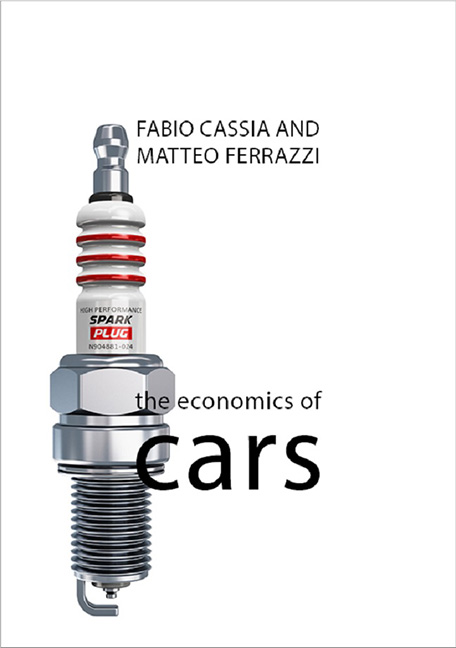3 - The Demand: New Consumers on the Doorstep
Published online by Cambridge University Press: 24 August 2023
Summary
“I do not dream football, I dream the American dream – two cars in a garage …”
Barry Sanders, American football playerDuring the early stages of the auto industry, Gottlieb Daimler proclaimed that the demand for cars would never surpass one million “because of the lack of drivers capable of driving vehicles”. But history proved to be different and through successive sales and commercial revolutions, the car became a part of our daily lives.
Car sales and the evolution of the global market
In 2016 new car sales surpassed 93 million units globally. Car sales have grown year-on-year for decades in line with individual income growth. Since 1945, the acquisition of wealth and growth in consumerism has meant that the average household owns a car and, thanks to financial credit, they can own a new car even before buying themselves a house. The global car market has grown massively post-financial crisis (ie. after 2009), but primarily outside its traditional developed markets. For every ten new vehicles sold in the world, five are sold in Asia and the Middle East, almost three in the Americas, and only two in Europe. Africa’s contribution is negligible given its size: in its 56 countries, just over 1 million new cars are sold per annum.
This snapshot of global sales reflects the dynamics of the industry in the last few years. Total global vehicle sales of new cars are growing strongly. Asia leads the world market: sales have grown almost threefold in less than a decade. Of the 33 million cars sold in Asia, two-thirds were sold in China, making China the biggest market in the world, much larger than the United States (which was twice the size of the Chinese market ten years ago). Together, the United States and China now represent half of all global sales, based on OICA data – the world organization for car producers (Organisation Internationale des Constructeurs d’Automobiles).
New car sales in Europe have slowed down considerably over the same period. This phenomenon is diffused throughout various European markets. Sales are falling significantly in Finland, Ireland, Spain, Greece, Portugal, the Netherlands and in Italy in particular.
- Type
- Chapter
- Information
- The Economics of Cars , pp. 35 - 48Publisher: Agenda PublishingPrint publication year: 2018



